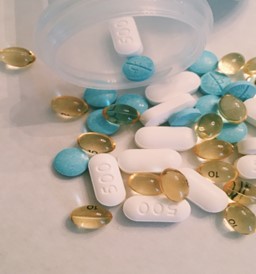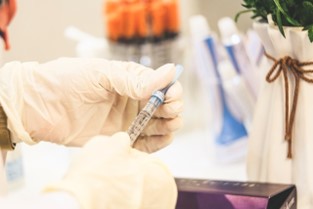Dr. Yaw Adu Gyamfi is the owner of Danadams Pharmaceutical, a medication provider to the people of Ghana. In the following article, Dr. Yaw Adu Gyamfi discusses the detailed processes of developing new drugs, as well as the steps that must be taken before they can be supplied to the public.
From laboratory testing to public use, the process of developing pharmaceuticals is a long-winded, intensive procedure. Despite having “just” five steps, experts note that it’s overwhelmingly rigorous — and rightfully so.
Dr. Yaw Adu Gyamfi of Danadams Pharmaceutical says that the industry is always under pressure to provide the latest and greatest medicines for a wide range of illnesses and conditions while also guaranteeing patient safety. The only way to ensure they never miss something vital? An in-depth development process, as per the FDA’s guidelines.
Dr. Yaw Adu Gyamfi on Discovery and Development
All pharmaceuticals begin their life in the laboratory, where researchers discover new drugs through:
- Molecular compound tests conducted to find potential beneficial outcomes against diseases
- New disease insights that let researchers design products to prevent/reverse adverse effects
- New technologies
- Existing treatments with unanticipated consequences
Dr. Yaw Adu Gyamfi reports that researchers may have thousands of potential candidates, but only a few will call for further study. They determine which are the most useful by gathering data on:
- Dosages
- Potential benefits
- How it is used (i.e., absorbed, metabolized, and excreted, etc.) by the body
- Administration methods (How the dug will be given, either mouth,anal or by injection)
- How it affects certain demographics
- How it interacts with other treatments/medications and food
- Effectiveness compared to similar drugs
Preclinical Research
Before testing a drug’s effect on humans, researchers establish whether the compound could potentially cause harm (i.e., toxicity). They do this in two ways — in vitro and in vivo.
According to the FDA, researchers must align with the good laboratory practices (GLP) outlined in medical product development rules and regulations (Part 58.1: Good Laboratory Practice for Nonclinical Laboratory Studies).
Dr. Yaw Adu Gyamfi says that such regulations offer the minimum basic requirements for:
- Personnel
- Study conduct
- Written protocols
- Operational procedures
- Facilities
- Equipment
- Study reports
- Systems of quality and safety assurance
Industry participants mention that preclinical studies aren’t vast. However, they must offer detailed information on toxicity and dosing requirements.
Dr. Yaw Adu Gyamfi of Danadams Pharmaceutical explains that if the analysis of preclinical test results is positive, researchers can move on to stage three.
 Clinical Research
Clinical Research
Preclinical research answers the basic questions; it isn’t a substitute for studying compounds’ interactions with the human body. Thus, they must perform clinical research (i.e., trials or studies done on people).
This phase of the pharmaceutical development process is perhaps the most intensive, comprised of three steps. Study designs must include specific parameters to accomplish the researchers’ goals, assuring the safety and effectiveness of their new drugs.
Designing Clinical Trials for Success
Researchers must find the answers to many specific questions about the compound. All trials follow a specific “study plan,” typically dubbed a protocol, developed by the manufacturer or research team.
Before beginning, Dr. Yaw Adu Gyamfi notes that industry professionals review historical information to affirm their questions and objectives. Afterward, they decide:
- Selection criteria
- Length of the study
- Number of participants( sample size)
- Control groups and bias limitation methods
- Dosages and drug administration
- Assessment types
- Data collection methods
- Review and analysis methods
The FDA notes that clinical trials follow a set series from Phase One (small-scale) to Phase Four (large-scale). Such studies often follow the below pattern:
- Phase one — Understanding safety and dosage, involves 20 to 100 healthy people for a few months. Data shows 70% of compounds move to the next stage.
- Phase two — Understanding efficacy and side effects, involves several hundred people with the specific condition or disease for up to two years. Statistics show that around 33% of drugs move past this stage.
- Phase three — Monitoring efficacy and adverse reactions, involves 300 to 3,000 volunteers with the disease. 25% to 30% move to the final phase.
- Phase four — Assuring efficacy and safety, involves several thousand volunteers.
Review by the FDA
Following successful clinical research, developers file an application to the FDA to market the drug. Those in the Administration thoroughly examine all submitted evidence to decide whether to issue an approval.
If the FDA deems it to be safe and effective, the team works with the applicant to refine and develop prescribing information (dubbed labeling). Dr. Yaw Adu Gyamfi reports that accuracy and objectivity are especially vital here, as they will form the foundation for approval and how to best utilize the medication.
FDA Post-Market Safety Monitoring
Despite the stringent steps throughout the pharmaceutical development process, limitations still present themselves. Thus, a true picture of safety evolves over the months, and then years, of the product’s marketplace lifetime.
Dr. Yaw Adu Gyamfi of Danadams Pharmaceutical says that the FDA constantly reviews reports of prescription problems and over-the-counter medicines, deciding whether to add cautions or update usage/dosage information accordingly.
Conclusion
The process of developing pharmaceutical drugs is a rigorous and lengthy journey. It requires significant resources and expertise to end with success. However, the potential benefits of bringing a new drug to market can be life-changing for many patients, potentially making a significant contribution to improving public health.
As the world advances, it is important to continue investing in research and development to ensure constant innovation of modern treatments and cures. By following this process, we can work towards a future where new and effective drugs are readily available to everyone who needs them.









